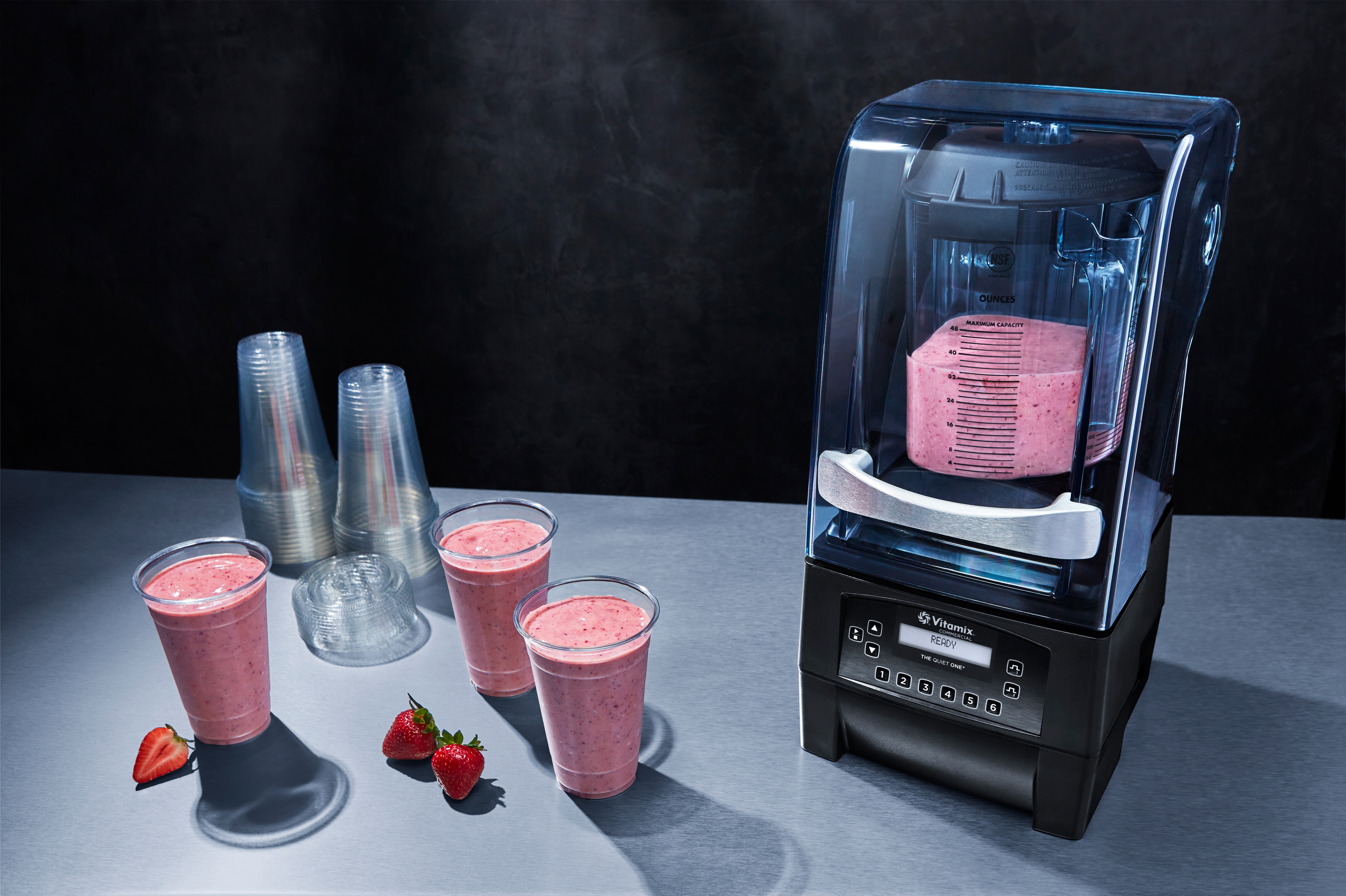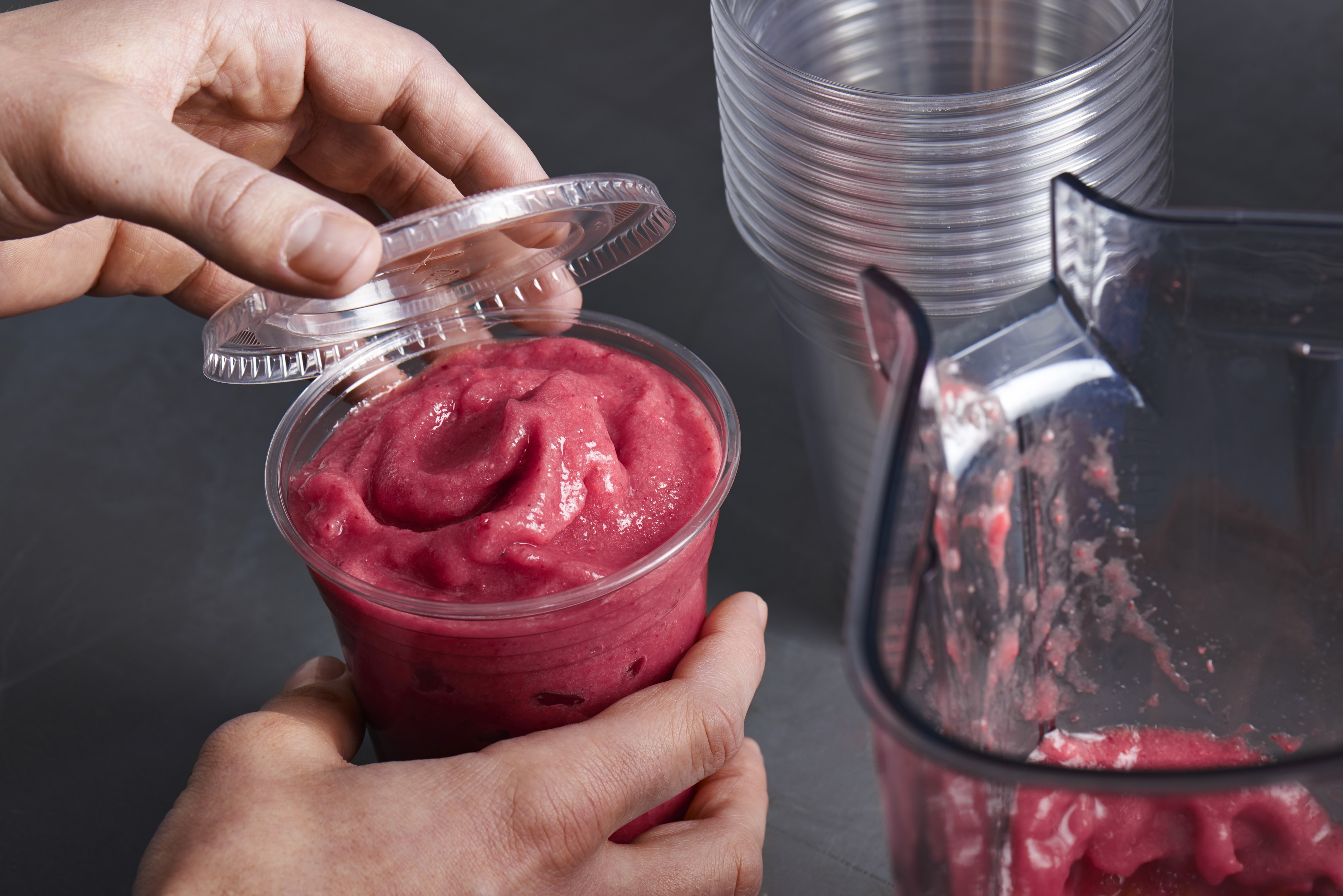Off-premises dining is here to stay, so it makes sense to ask – how much staying power do your frozen beverages have? Are they still good by the time they reach their destination? Or have they begun to separate, become watery and less appetizing?
Many large-chain QSRs probably know exactly how long their beverages can hang on before they begin to separate because they have tested them. Further, if their beverages are made from a pre-mix, there’s a good chance they contain a binder like xanthan gum, which is often added to extend the hold time.
But for restaurants that are serving made-to-order frozen beverages – composed of individual ingredients – the challenge of staying power is real.
Which Beverages Have Staying Power
Frozen coffee beverages, slushies, or other simple fruit drinks do not usually fare well over a long, unrefrigerated trip. They usually consist of a limited set of ingredients – ice or water combined with coffee, fruit, sugar, or dairy – and there is nothing to hold them together. Short of adding a stabilizer like xanthan gum, there is not a lot to be done.
Smoothies, on the other hand, can do quite well over the journey home because they very often contain ingredients with thickening or binding qualities, such as avocado, mango, flaxseed, chia seeds, protein powder, or grains.
While these ingredients help with staying power, they are not a magic bullet. If you want to maximize the holding time, there are a few other basic variables to consider.
Ice and Water
Generally, you’re aiming for a 50/50 ratio between liquid and solid ingredients. Ice is a solid, but as the beverage sits, it becomes liquid – diluting the beverage. Other ingredients may also contribute to the liquid side of the smoothie, such as leafy greens, watermelon, or fresh fruit.
The challenge is to limit the net liquid from all ingredients – at the time the beverage is being blended, as well as later as it is sitting unrefrigerated. Any added ice in the recipe is a risk, because by the time the beverage is cons
Another variable is sugar. Liquids with high sugar, like apple juice, will not freeze as easily as liquids with lower sugar, like coconut water and milks. Therefore, if using a high-sugar liquid, use an ounce or so less than you would with a low-sugar liquid. This measure will ensure the beverage is sufficiently thick.
Tip: If using ice, choose smaller or less dense forms of ice, such as pearls, nuggets, or flaked ice. You can process them faster and more easily than large, solid cubes. Smaller forms of ice also pack better in a measuring device – without large spaces between the pieces – which enables better consistency in your recipe.
Process Time
Ideally, your blender should power through your ingredients quickly. Short processing times are good not only for speed of service, but also for controlling friction and heat. If you’re starting with frozen fruit, for example, the faster you process it, the less coldness you will lose.
Tip: The best way to determine if your blender is sufficiently fast and powerful is to try it on a tough recipe (e.g., one containing frozen fruit) and see how it does. Be sure to break up large chunks of frozen fruit as you are adding them to the container. Turn the blender on and briefly break down the contents at slow speed, then ramp up to a high speed. It should all happen in seconds.

Fresh vs. Frozen Fruit
While fresh fruit sounds good, frozen fruit actually works better in smoothies because it generates lots of coldness while adding a limited amount of liquid. In fact, you may not need to add ice at all.
Further, there is no nutritional penalty for frozen fruit over fresh fruit. If flash frozen shortly after harvest at peak ripeness, it may contain more vitamins and minerals than fresh fruit, which is often picked before ripeness so it can ripen during transport to its destination.
Tip: If pulling frozen fruit out of long-term storage, be sure to allow for slacking time – the amount of time needed for the fruit to reach its proper holding temperature.
Holding Temperatures
The temperature of ingredients right before you use them is the holding temperature. Holding temperatures affect staying power (hold times). If holding temperature is too high, the beverage will melt faster; it may not be as thick, nor hold as much flavor.
For holding temperatures, follow the recommendations on the box. If temperatures are too low, the contents may be too thick to blend or, in rare instances, they could damage the blender. Generally, you do not want ingredients any colder than 0° F.
Tip: Keep an eye on the freezer temperature between morning and afternoon. Depending on your target temperature, +/- 5° could be significant. When freezer doors are being opened and closed a lot, dipping cabinet-style freezers keep temperatures more constant than freezers with doors that open to the side.
Transport
While smoothies look best in clear, plastic cups, they will stay colder in an insulated paper cup. You can also minimize temperature loss during transport by having a cooler in the vehicle. Or, just as important, keep smoothies in a cold holding cabinet before they are picked up.
Tip: Test the holding time of your smoothies. It sounds easy, but many restaurants don’t do it. Just set them out at room temperature and record the results after 10, 20, and 30 minutes. If you don’t like the outcome, change some of the variables we have discussed in this article.
Staying Power Champion
Many frozen beverages will not fare so well during a long trip home, but smoothies can do better than most if you experiment with the ingredients, limiting ice and liquids and adding natural ingredients that act as stabilizers, including frozen fruit. There are so many options for smoothie ingredients that it is usually possible to compose a recipe that meets the holding-time requirements for most restaurants.
For more information, contact Stephen Hosey at letstalkcommercial@vitamix.com.

